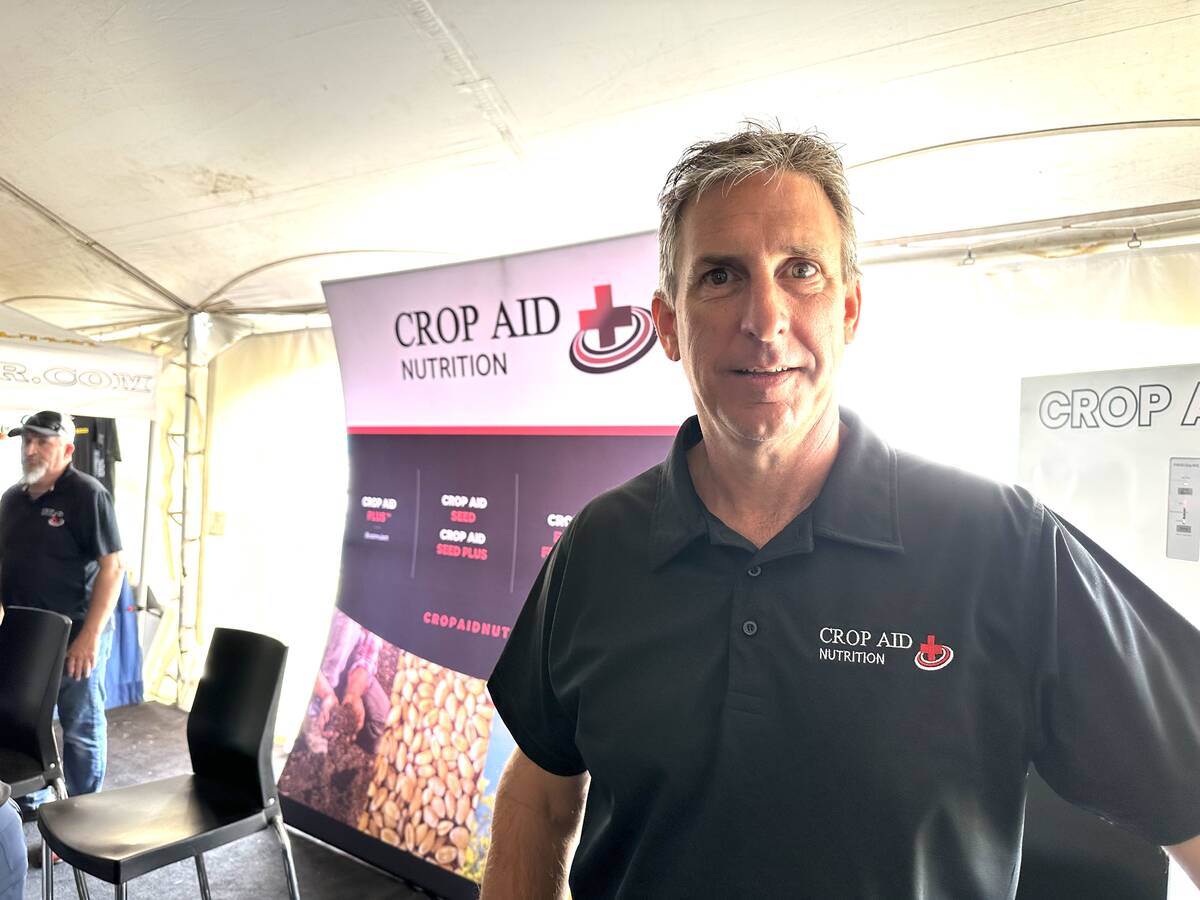The first time Alberta grain farmer Jay Schultz remembers hearing about cabbage seedpod weevil was in 2005 at the University of Alberta when Dr. Lloyd Dosdall warned that it could become a major pest in the province. Schultz, who farms 6,000 acres near Standard, Alta., said that he never really paid attention, that is, until the summer of 2015 when populations really starting growing. Schultz learned the hard way that control is advised once populations reach threshold.
Although there was noticeable chatter about a potential problem in that summer of 2015, Schultz didn’t take them too seriously.
Read Also

New soil treatment targets saline patches in fields
Crop Aid SS is a Saskatchewan-made spray that’s intended to help farmers manage saline soils by leaching salts away from the root zone.
“My personal philosophy on insects is that I would much rather go to the lake in the summer instead of sweeping fields for bugs,” he said. “I would rather not spray an insecticide, and let pest populations balance themselves.”
“It’s easy to take that stance when you don’t know a pest is destroying your crop,” he continued.
By the time Schultz returned from the lake and walked the fields with a local agronomist, it was pretty much too late. “We found cabbage seedpod weevil was easily two to three times threshold levels,” he recalled. “In some cases, far too much to bother counting. They were just everywhere. Obviously the strategy of doing nothing was not working, as cabbage seedpod weevil does not have any significant predators to keep them in check.”
Despite the fact that they were in the middle of a severe drought, Schultz made the decision to spray the worst of the fields, not knowing if it would pay off. “We protected the plants, gave them a chance and some of those fields set new yield records for us that year,” he said.
Schultz was lucky; he caught the problem with enough time to address the issue. Cabbage seedpod weevils are attracted to the buds on early canola plants. They feed on the buds, migrating as the crop comes into bloom. According to Alberta entomologist Scott Meers, spraying is not recommended before 10 per cent bloom.
Meers reminds growers that this is especially important since some insecticides, like Matador, can only be applied once per season. Weevils, he said, move very easily from field to field. While spraying early will eliminate those early infestations, a whole new group could be there by early flowering. “Some producers have started pushing earlier,” he said. “They run the risk of getting ahead of the major migration in the field and maybe having to do it again.”
Finding the right stage
How will growers know when their canola crop has reached 10 percent bloom? If growers are uncertain, Meers suggests looking at a staging guide online. The canola should be nice and yellow all across the field, he said. In situations where fields are uneven, growers should focus on the flowered areas, he said.
The economic threshold is 20 to 40 cabbage seedpod weevils per 10 sweeps, or 2.5 to three per sweep. Use a sweep net to take five samples along the edge of the field. While growers should concentrate control efforts on flowered areas in uneven fields, it’s important to sweep at random, not just in the flowered areas.
Before spraying, Meers suggests that growers contact local beekeepers to prevent damage to their hives.
Keeping on top of the weevil
So how do growers stay on top of what’s happening in their fields? One way is to scout. Knowing exactly what’s out there will help them to make important spray decisions.
“I think growers have to be very careful just blanket spraying year to year for insects like cabbage seedpod weevil,” said Schultz. “It’s really easy to just take a retailer’s suggestion to spray or to just add some insecticide into your tank mix because you are doing a pass anyway.”
“But we need to know what’s going on in the field and know threshold levels,” he said.
To stay on top of pest outbreaks, Schultz suggests following agronomy updates online. He also uses Twitter. “In Alberta, Scott Meers and associate Shelley Barkley are excellent resources,” said Schultz. “Their #ABbugchat program on Twitter during the growing season is a great way to find out what they and other growers are seeing in their area and what to do about it.”
“It’s like coffee shop talk from the seat of your tractor while on auto steer,” he continued. “Of course, it’s only useful if you have Twitter, and not every grower will use it.”
Find it on Twitter
If you’re not sure who to follow on Twitter, and you’re looking for agronomy information for the coming season, try these experts:
- Jay Schultz, grower: @WheatlanderJay
- Scott Meers, Alberta Agriculture insect specialist: @ABbugcounter
- Shelley Barkley, Alberta Agriculture insect research technologist: @Megarhyssa
Canola Council of Canada agronomy specialists:
- Autumn Barnes (Alta.): @autumnCCC
- Angela Brackenweed (Man.): @BrackenreedCCC
- Ian Epp (Sask.): @EppCCC
- Dan Orchard (Alta.): @orchardCCC
- Gregory Sekulic (Alta.): @SekulicCCC
Locating the bloom stage
Syngenta has a staging guide and the following information on its website.
- At 10 per cent bloom: Approximately 10 open flowers on the main stem (which includes aborted flowers and developing pods). Two to four days from first flower to 10 per cent bloom. This can vary by season, variety, or hybrid.
- At 20 per cent bloom: Approximately 14 to 16 flowers on the main stem. Minimal petal drop has occurred.
- At 30 per cent bloom: Approximately 20 open flowers on the main stem. Six to eight days after the start of flowering. After 30 per cent bloom, petal drop and pod set begin.
- At 50 per cent bloom: More than 20 flowers on the main stem. The stem has elongated.
– Leeann Minogue

















